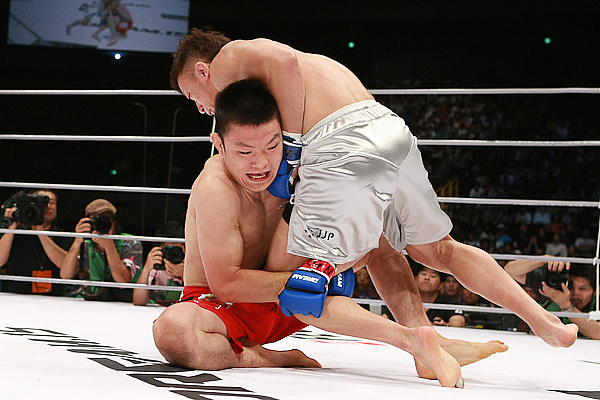Is Japanese MMA Still Relevant?
Jake Rossen Jul 12, 2010

Shinya Aoki vs. Tatsuya Kawajiri: Taro
Irei/Sherdog.com
The standing philosophy of Japanese promotions can be boiled down to this: put everything in a box, shake it, and dump whatever comes out.
Advertisement
There’s not much of a debate now. Shinya Aoki, who was perceived as the last Japanese ace, lost a one-sided decision to Gilbert Melendez in April. Gegard Mousasi, a fighter groomed in Japan, lost to Muhammed Lawal the same night. (In fairness, Lawal came up in Sengoku.) In a Dream event held Saturday morning, Mousasi got an ego-boost win over Jake O'Brien after the promotion played musical chairs with his opponent; Aoki got some momentum back with a win over Tatsuya Kawajiri, but to the rest of the world, it only stood to reinforce the superiority of athletes competing in the U.S.
It’s a bad time to be an MMA fan in Japan.
Dream has tried to change course. A cage introduced last fall was intended to mimic the format of promotions here, but fighters had little interest in it. (Kazushi Sakuraba entered his last fight with “We want ring” playing on video screens.) They dug into Pride’s bag of tricks and hosted a “Super Hulk” tournament with over-sized, under-skilled giants taking on smaller, more talented fighters: Jose Canseco was a participant. They even tried resurrecting the foolproof Gracie/Sakuraba rivalry by enticing Ralek Gracie to come fight the aging star. (He won.)
None of it mattered much. Ratings on TBS, one of Japan’s over-air networks, are not impressive. The trick bag is approaching empty.
More bad news? Dream is backed by FEG, the promotion behind K-1 -- Japan’s premiere combat sports league since the early 1990s. If they don’t have a handle on how to resuscitate things or the cash to make bold moves, the chances of a positive outcome are slim.
In many ways, it was the surge of the UFC in 2005 that started it: finally able to afford marquee talent, Pride had issues holding on to attractions. When the Yakuza scandal hit, effectively destroying that company in 2007, Japan’s audiences seemed to take that as a sign that the glory days were over.
This would be a good time to suggest changes, but the reality is, there may not be many to make. Pride built its foundation on the appeal of pro wrestlers fighting “for real,” a resource that’s dried up in the wake of lower purses and fan apathy. Sakuraba always seems one bad break away from retirement: Norifumi “Kid” Yamamoto is aging in the ring.
And in easily-digested bullet form:
- Satoshi Ishii, a Judo gold medalist and the heir apparent to Hidehiko Yoshida, was beaten by Yoshida in his debut fight. (Apparently, no one told Yoshida that passing the torch usually involves losing.)
- Aoki losing to Melendez in embarrassing fashion.
- The UFC, which could provide some excitement with a name brand and athletes like Yoshihiro Akiyama and Yushin Okami, may have little to no interest in going to the Land of the Rising Sun.
Will Japanese MMA disappear entirely? Unlikely: all it takes is one big attraction to incite interest again. But said attraction’s whereabouts are unknown. Just like MMA’s future in the East.
Related Articles







